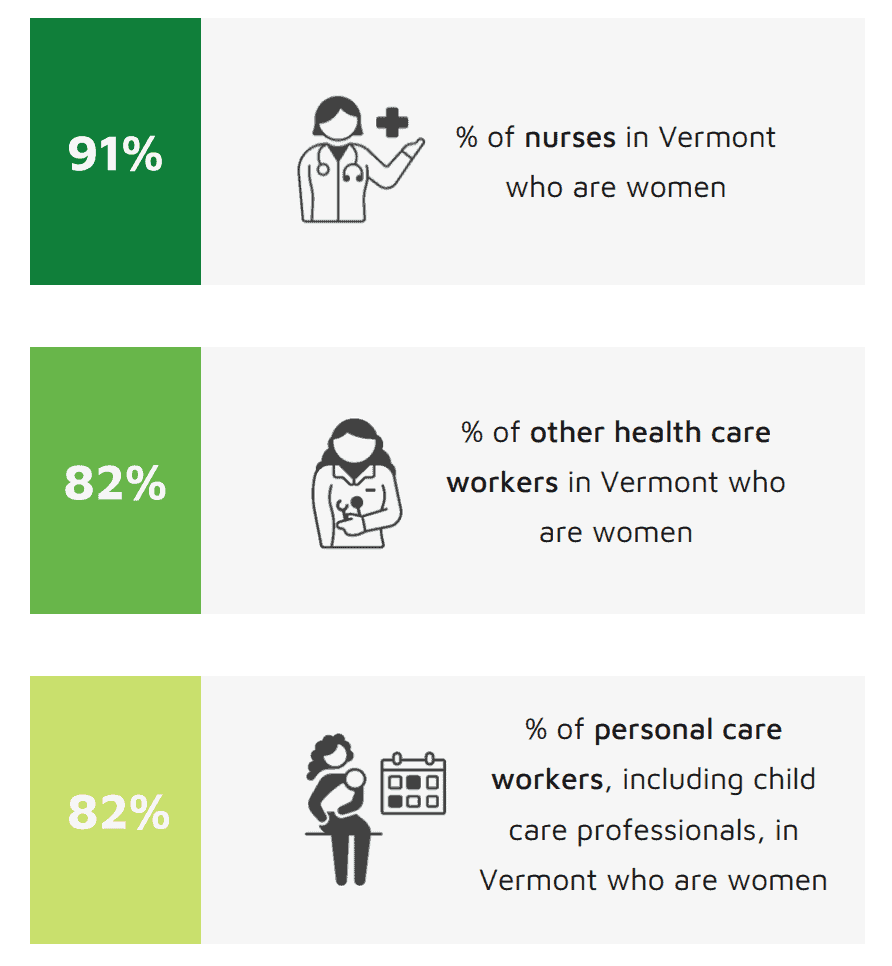
The state’s independent non-partisan Vermont Commission on Women released a new data dashboard report on Thursday, June 25, outlining on the ways the Covid-19 pandemic has disproportionately and uniquely impacted women.
“The economic downturn associated with the pandemic makes women more vulnerable to financial instability,” said Cary Brown, the commission’s executive director. “Our dashboard reveals that a higher percentage of April’s unemployment claims were made by women: 46% vs. 40% by men. Our state has the highest percentage of women working at tipped wage jobs in the U.S. — 81% of those workers are women— and those jobs were largely shut down. Nationwide, women-owned businesses are more likely to be small and in service sectors most impacted by the crisis, like personal or retail services.”
Both for those who work in child care and for those that rely on child care to work, the loss of jobs and access have real and potentially lasting economic impacts for women. June 1 marked the first date child care programs could reopen, but with limitations on numbers of children and challenging new health protocols. Some programs are closing, further limiting availability. Before Covid-19, over 70% of Vermont children 6 and under had all available parents in the labor force – the need for more quality affordable care is now likely greater than ever.
The dashboard examines how impacts are multiplied by factors like inequity. In Vermont the median annual income for women who work full-time is $41,146, $8,000 less than the median annual salary of men, equating to a loss or a “wage gap” of 16 cents to every dollar earned. The gap is much wider for women of color in our state who are also facing other inequities. The visual report addresses that while almost 9.2% of Vermont’s positive cases are found in African Americans, they make up only 1.4% of our population.
Black and Asian Vermonters are also being hospitalized at higher rates.
The Commission’s Data Management Coordinator, Anna Brouillette, commented on those disparities, “Ongoing gaps for Vermonters of color — both in Covid-19 case data and in the disproportionate wage gaps experienced by women of color in our state, remind us of the importance of examining and discussing the nuance and complexity of women’s experiences.”
For more information read the report at: women.vermont.gov.



